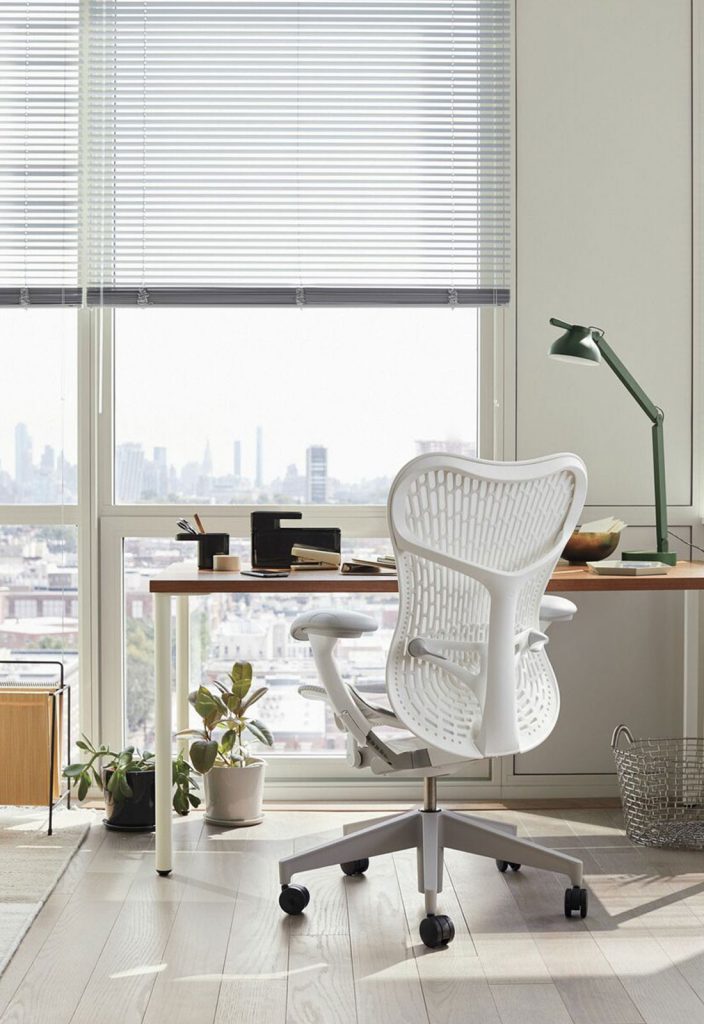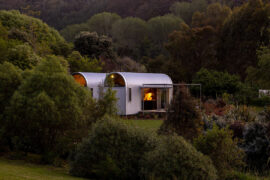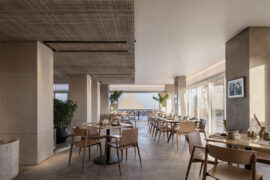In a two-part series on the future of work, we explore what work will look like in the post-pandemic future – and how businesses can best prepare to embrace this dynamic transition.

Since the start of the pandemic, there has been a lot of speculation about how modern ways of working are going to change. We have been trying to navigate the ongoing switch between office-based and remote working caused by the boomerang of lock-downs – and coming to terms with the constant uncertainty of the process of recovery.
However, amongst the persistent ambiguity surrounding long-term implications of COVID-19 on our lives, one thing is certain – work has been decentralised and now happens in the office, at home – and everywhere in between. Learning to embrace it – and use it to their strategic advantage – is one of the most important things modern organisations can do to stay relevant. And Herman Miller is here to help.
The brand has always been an authority on creating desirable and productive workplaces. With their robust global prowess, the incredible magnitude and depth of research the company invests in – and their irrevocable conviction to lead with a true human insight in everything they do, Herman Miller is in a unique position to consolidate some of the most significant findings on the changing attitudes towards work, and help organisations put these conclusions into practice.

A couple months ago, Herman Miller’s National Insights Manager for Australia and New Zealand – shared valuable insights on why the office would continue being relevant in the post-pandemic reality. Now, in a two-part series of articles on the future of work we dig deeper into what it means in practice – and what shifts employers should implement from a strategic point of view to best reflect the emerging needs and habits of today’s workforce.
An outcome of 160 virtual conversations with industry leaders, real estate companies and interior design firms Herman Miller’s Global Research and Insights Team conducted over the course of six months, the findings provide context for the team’s past research and ground it in current customer needs. As part of this comprehensive review, Herman Miller’s team has identified three main shifts employers should be aligning their business strategies with.

The first one entails switching from forced acceptance to strategic advantage and it starts with an acknowledgment – and an enthusiastic one – of the fact that work has become distributed, and is set to stay that way. What may have seemed like a novelty without long-term potential at the start of the pandemic to some, a year and a half later is finally starting to be embraced by the business leaders and employees around the world.
Through what would have been one of the most unstable and challenging times in our lives we have collectively proven that productivity isn’t solely tied to the office buildings – and good quality work can happen anywhere. In fact, seeing the benefits of distributed ways of working, up to 70% of companies are planning to continue working from home for at least some portion of the week. This sentiment is also strongly supported by employees, with more than 81% of office workers stating that they do not see themselves returning to the post-COVID office five days a week.
In response to these changing ways of working – and shifts in attitudes – a variety of strategic approaches has emerged amongst organisations undergoing this dynamic process of transition. Some of the most prevalent ones have been the “binary strategy” which qualifies employees as either remote or office workers, or the “remote-first strategy” in which working remotely becomes the primary mode of every employee. However, the strategic approach gaining the most momentum and, according to Herman Miller, demonstrating the most potential for the workforce to thrive in the post-pandemic reality, shifts the focus from a fixed commitment to specific locations onto inclusivity and equity of experience.

The approach is called a “hybrid strategy” and it empowers employees to make autonomous, daily decisions in choosing from a wide range of options – both at and outside the office – in recognition of the fact that there are a variety of dynamic factors that can influence employee engagement and productivity; and that these can shift day-to-day.
Whether it’s a particular working style, parenting responsibilities, home office conditions or sensory needs, the hybrid strategy aims at addressing an extremely diverse workforce in a holistic manner that’s deeply rooted in trust, liberty of choice and appreciation of individual needs, motivations and preferences.

Supporting employees in exercising their individual freedoms to work from the office, home or elsewhere will be crucial to creating a future-forward work culture that fosters positive and healthy experiences. That, in turn, is bound to have a fantastic effect on long-term productivity and engagement levels.
With hybrid strategy fast becoming the most beneficial business approach for the post-pandemic world, what role does the office play in this model? The hybrid approach creates an opportunity for the office to become a truly desirable destination that fosters social and cultural aspects of work that cannot be recreated in any other environment. In the second part of the series we look at how to embrace the unique role of the office – and how to empower employees to interact with the workplace environment in order to adapt it to their individual needs.
INDESIGN is on instagram
Follow @indesignlive
A searchable and comprehensive guide for specifying leading products and their suppliers
Keep up to date with the latest and greatest from our industry BFF's!
The new range features slabs with warm, earthy palettes that lend a sense of organic luxury to every space.

A longstanding partnership turns a historic city into a hub for emerging talent

A curated exhibition in Frederiksstaden captures the spirit of Australian design

Gaggenau’s understated appliance fuses a carefully calibrated aesthetic of deliberate subtraction with an intuitive dynamism of culinary fluidity, unveiling a delightfully unrestricted spectrum of high-performing creativity.

The second installment in our three-part series on collaborations between the world’s best designers and the American Hardwood Export Council

In the wake of both COVID-related disruptions and its own 25th anniversary, the interior design practice is letting the market know why its knowledge-led approach is the way of the future.
The internet never sleeps! Here's the stuff you might have missed

Projects and people from across our region were certainly prominent at the 2025 INDE.Awards gala and in particular, Aotearoa/New Zealand, Singapore and Thailand made their presence felt.

Jesse Lockhart-Krause, Director of Lockhart-Krause Architects, tells us about a storied building in Queensland that has now become a functional workplace for a therapy centre.

THISS Studio has completed the interior fit out of a flexible office and creative space in east London for independent communications studio, SALT.

Pedrali’s Nemea collection, designed by Cazzaniga Mandelli Pagliarulo, marks 10 years of refined presence in hospitality and commercial spaces around the world. With its sculptural timber form and enduring versatility, Nemea proves that timeless design is never out of place.